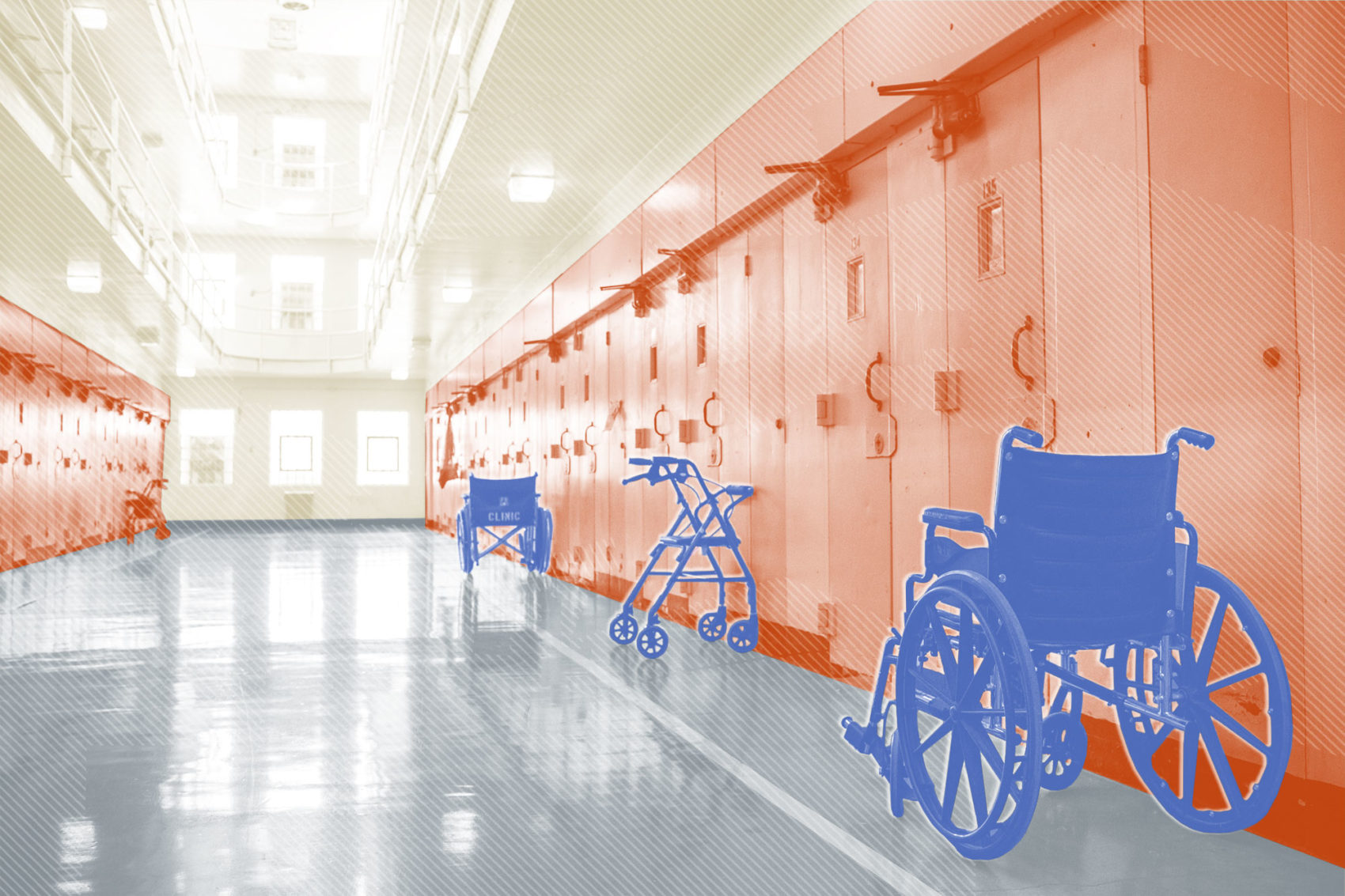The Costs Of Not Releasing People From Prison
Recent reporting is a reminder of the crisis of elderly and ailing people in US prisons.

|
Texas prisons hold an increasingly aging, ailing population. The Texas Tribune reported this week on the changing demographics of who the state incarcerates and its consequences for healthcare provision, quality, and cost. Even as the total number of people in prison has fallen this decade (although only by 3 percent) the number of people in prison who are 55 or older has gone up by 65 percent. State costs for healthcare for incarcerated people have gone up by more than 50 percent in the past seven years. “The main reason,” for the ballooning costs, is “an older, sicker prison population.”
This is the result of policy choices. One expert told the Tribune that Texas residents shouldn’t expect costs to decrease if the state continues to incarcerate “the same kind of demographics you’re sending to prison now.”
Across the country, there is a growing push to reconsider the extreme sentences that set the United States apart in their harshness, disproportionately fall on Black and Latinx people, and have contributed to the decades-long buildup in prison populations. What is required are changes that will allow people who have been in prison to be considered for release, based not on what they were sent to prison for, but on who they are now.
In New York, advocates have been calling for the passage of two bills that would expand opportunities for people who pose little public safety risk to be considered for release. As the Brooklyn Eagle reported today, the two bills are the Fair and Timely Parole bill and the Elder Parole bill. In keeping with the intent of parole, the first would require that decision makers evaluate a person’s eligibility for release based on their recent record of conduct and accomplishments, rather than on what might be decades-old convictions. The latter would allow for anyone who has already been in prison for 15 years and is at least 55 to be considered for release. In August, the death of 61-year-old Valerie Gaiter, in prison since 1979, longer than any other woman in the state, brought renewed public attention to the need for elder parole in New York.
As Jose Saldana, director of the Release Aging People in Prison (RAPP) campaign told the Brooklyn Eagle yesterday, “Men and women in New York State’s prison system are growing old, sick and dying because of the culture of punishment perpetuated by the New York State Parole Board.” In New York, as in Texas, the number of elderly people in prison has increased significantly in the past decade, even while the overall number of people in prison has fallen.
In Pennsylvania, home to one of the nation’s largest populations of people serving life without parole sentences, advocates are mobilizing around parole reform as well. Over 5,400 people, under current law, have been sentenced to die in prison in that state alone. This is one in every 10 people in prison on a life without parole sentence in the country. Other jurisdictions, including Texas and the District of Columbia, are considering introducing or expanding second-look legislation that would give people sentenced for crimes committed when they were young an opportunity to be considered for release after a set number of years.
As the Sentencing Project and other advocates have long pointed out, there are also sentences that are not formal life without parole sentences but, by virtue of their minimum length or because of the breakdown in parole release mechanisms, will also condemn people to a lifetime in prison.
This month, The Appeal published a photo essay by Joshua Vaughn on the life that men approaching death lead inside a Pennsylvania prison. The men were photographed from behind to protect their identities. The photos show a series of stooped and white or gray-haired men, in wheelchairs, with walkers, connected to oxygen tanks, or simply still next to their hospital beds. The photos could be from any hospital unit dedicated to the care of elderly patients. The photos make absurd what is already a strained argument—that people in their 50s and 60s, far from the actions of their youth, debilitated by illness and imprisonment, pose a threat to public safety that requires their continued incarceration by the thousands.
In The Appeal last week, Lauren Gill reported on the case of Willie Mae Harris in Arkansas, “now 72 and blind,” who “has been incarcerated at the Wrightsville Women’s Facility, southeast of Little Rock, for 34 years.” After turning down a plea deal with a maximum sentence of 20 years and the possibility of release after 13, Harris went to trial in 1985 on charges that she had shot and killed her abusive husband. After a one-day trial, she was found guilty of first-degree murder and sentenced to life in prison.
She has been recommended for release five times and each time, the governor, who has the final say, has denied her clemency. Her daughter, Silvia, who was 14 when Harris was sentenced to life in prison and had witnessed her father’s violence toward her mother, told The Appeal, “I didn’t just lose my daddy. In one instance, I lost both my parents.” She continued: “If I tell anybody my biggest fear, it’s burying my mother in prison.”
